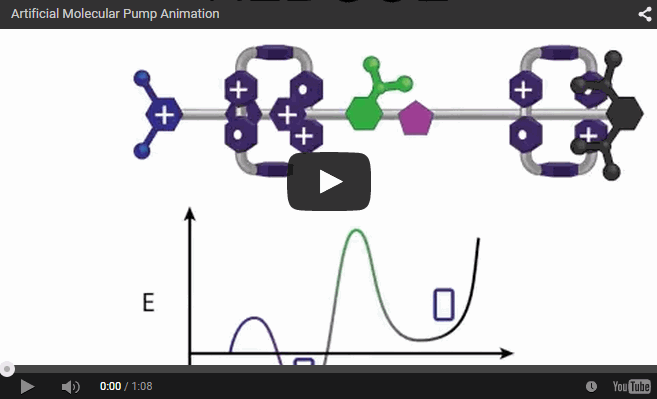
Ricoh today announced that it has created a novel flexible material “Energy-Generating Rubber” that converts pressure and vibration into electric energy with high efficiency.
Currently, piezoelectric materials, which generate electricity with mechanical strain, are drawing attention as energy-harvesting* materials. Major piezoelectric materials are ceramics and polymers, but they have some deficits which prevent them from wide prevalence.
Piezoelectric ceramics are used for restricted purposes because of their fragility and heavy weight although they generate relatively high electricity. On the other hand, piezoelectric polymers generate very slight electricity although they achieve flexibility by reducing the thickness.
The “Energy-Generating Rubber” created by Ricoh generates as high a level of electricity as ceramics while its appearance is a soft and flexible sheet. Since it overcomes the deficits of previous piezoelectric ceramics and polymers, it is expected to be applied to multiple areas combining the advantages of flexibility and high-output.
Ricoh will advance research in this technology aiming at commercializing the material for various purposes especially flexible sensors. In the future, it will contribute to the coming age of IoT, when various devices are equipped with communication features, by providing a promising energy-generating material.
Ceramics, a major traditional piezoelectric material is routinely used in electronic parts of utility equipment as pressure and vibration sensors. Although it generates enough electricity for those purposes, it has deficits: namely fragility, heavy weight and inclusion of lead. By contrast to ceramics, the “Energy-Generating Rubber” overcomes those deficits. Furthermore, its high durability has been confirmed through durability tests of several million periods.
Polymers, such as PVDF (PolyVinylidene DiFluoride), generate slight electricity although they have flexibility. The “Energy-Generating Rubber” has acquired both sensitivity to light load and durability against heavy load by combining high-output comparable to ceramics and more flexibility than polymers.
In addition, “Energy-Generating Rubber” has advantages in workability and productivity because it is soft, and does not require a high-temperature process like ceramics. Flexible, high-output, durable, workable and productive, “Energy-Generating Rubber” can be installed in various locations and large spaces. It can therefore be used for various purposes in the wider market compared with ceramics and polymers.
via Ricoh: “Energy-Generating Rubber” Combines Flexibility and High-Output
The Latest on: Energy-Generating Rubber
[google_news title=”” keyword=”Energy-Generating Rubber” num_posts=”10″ blurb_length=”0″ show_thumb=”left”]
via Google News
The Latest on: Energy-Generating Rubber
- Hoka vs Brooks: Which running shoe brand is best for you?on April 30, 2024 at 7:23 am
Hoka and Brooks are mainstays among the most popular shoe brands for dedicated runners. Both are known for making comfortable, durable running shoes. And both offer models to suit a wide range of ...
- 11 Of The Best Country Pavilions Of The Venice Biennale 2024on April 30, 2024 at 7:00 am
There are 88 National participations at the 60th edition of the art extravaganza that’s the Venice Biennale, on until 24 November throughout the city.
- G7 to sign exit from coal by 2035, but may offer leeway, sources sayon April 30, 2024 at 3:18 am
Energy ministers from the Group of Seven (G7) major democracies will sign a deal to end the use of coal in power generation between 2030 and 2035, but could offer a leeway to Germany and Japan, two ...
- South Africa has one of the world’s largest manganese reserves. So why does it outsource for processing?on April 30, 2024 at 1:40 am
The Manganese Metal Company is vying to produce more manganese by-products locally in South Africa, a country that exports nearly all of its ore for processing overseas.
- The Best Microsoft Xbox One Gameson April 27, 2024 at 7:00 am
Xbox Series S and X games receive many headlines, but don't overlook the many excellent titles for Microsoft's excellent, last-gen system.
- Hoka Versus Brooks: Which Running Shoe Brand Is Best for You?on April 25, 2024 at 10:53 am
Hoka and Brooks are mainstays among the most popular shoe brands for dedicated runners. Both are known for making comfortable, durable shoes. Both offer models to suit a wide range of running ...
- Aspiration vs. reality on energyon April 22, 2024 at 11:26 pm
I read an article recently predicting that the AI (Artificial Intelligence) revolution we are supposedly in, is going to result in a much greater demand for natural gas. I am sure that was not good ...
- Will New York’s Big Socialist Climate Policy Be Led by ... McKinsey?on April 18, 2024 at 8:04 am
The Build Public Renewables Act was hailed as a model for socialist green energy policy. But now the New York Power Authority is asking McKinsey to come up with an implementation plan.
- Port of Green Bay generating millions, plans for possible coal pile relocationon April 17, 2024 at 3:07 pm
Green Bay, Brown County looking to cover $22 million gap for land expansion project at Pulliam Power plant. From thorn-proof gloves to pest-prevention products, you'll find 'em all at Amazon starting ...
- The best deals at Amazon will save you a bundle on tech, mattresses and moreon April 16, 2024 at 3:54 pm
Whether you're a whiz in the kitchen or a beginner, you've still got to eat. Stop spending so much money on takeout and grab yourself an Instant Pot Pro Plus. You'll feel much better and save money -- ...
via Bing News










